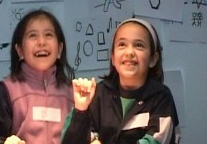- liked this
5 lessons from the designer of Farmville

It’s not often you get to hear from a game designer whose work spans multiple genres, from blockbuster social games like Farmville while at through to girl games hits like My Horse for the iPad and many more.
Raymond Holmes of gave a talk at the Innovation Lab last night on the different games he has designed and what he learned from them:
1/ Minimum viable product can be very “minimum” if you’re early

Farmville was pulled together in an incredibly short amount of time and with a very small team. It went to show that a MVP can be very “minimum” and still succeed, particularly in the era of freemium and games as a service with fast iteration post launch. He cautioned that it only works if the market is new, but given all the rapid evolution in gaming platforms these days there are likely to be plenty of situations where that remains the case - there are plenty of new markets that don’t even exist yet in gaming.
2/ Learn to think from a user point of view

One of his early gigs was helping design Barbie Team Gymnastics. The game did well and taught him “the important ability to design from a player point of view”. It was a game that clearly he wouldn’t enjoy playing himself, but he learned a lot about the actual players who enjoy that type of game and how they play and interact. That resonated with my own personal experience in designing .
3/ Leverage what you learned from the past

At Barbie Team Gymnastics, he learned a lot about gymnastics - animation, theory etc. And later when he was on the team creating Aeon Flux, it was decided the lead protagonist would be much more acrobatic, and his past experience led perfectly to the new game. His lesson? Leverage what you have learned and have an open mind to new topics - they could be useful in the future too.
4/ Monetization has to be appropriate to the audience

It was interesting hearing about his experience with My Horse - on one hand an extremely popular game with over 10 million downloads for iPad but relatively speaking, low monetization. Why? Because a lot of the level grind mechanics in the game didn’t match the audience - young girls and boys. They simply didn’t “get it”. In hindsight, his opinion was that it could have been better to have designed more of a pet simulator/dress up style of experience to match those who love the game. That said, it’s hard to argue with the success of a product that has driven that much traffic and surely a good amount of revenue.
5/ And finally… every game needs a WOW moment

Raymond made the observation that the moment players fell in love with My Horse was when they first saw the horse in the field, animating and interacting with the player - truly a wow moment that emotionally hooked them (we see that when players first see their stylist interact to their touch). He recommends all games try to establish a WOW moment early on in the experience to get them engaged.
All up, some excellent tips from a very experienced and creative talent.
Any feedback?
